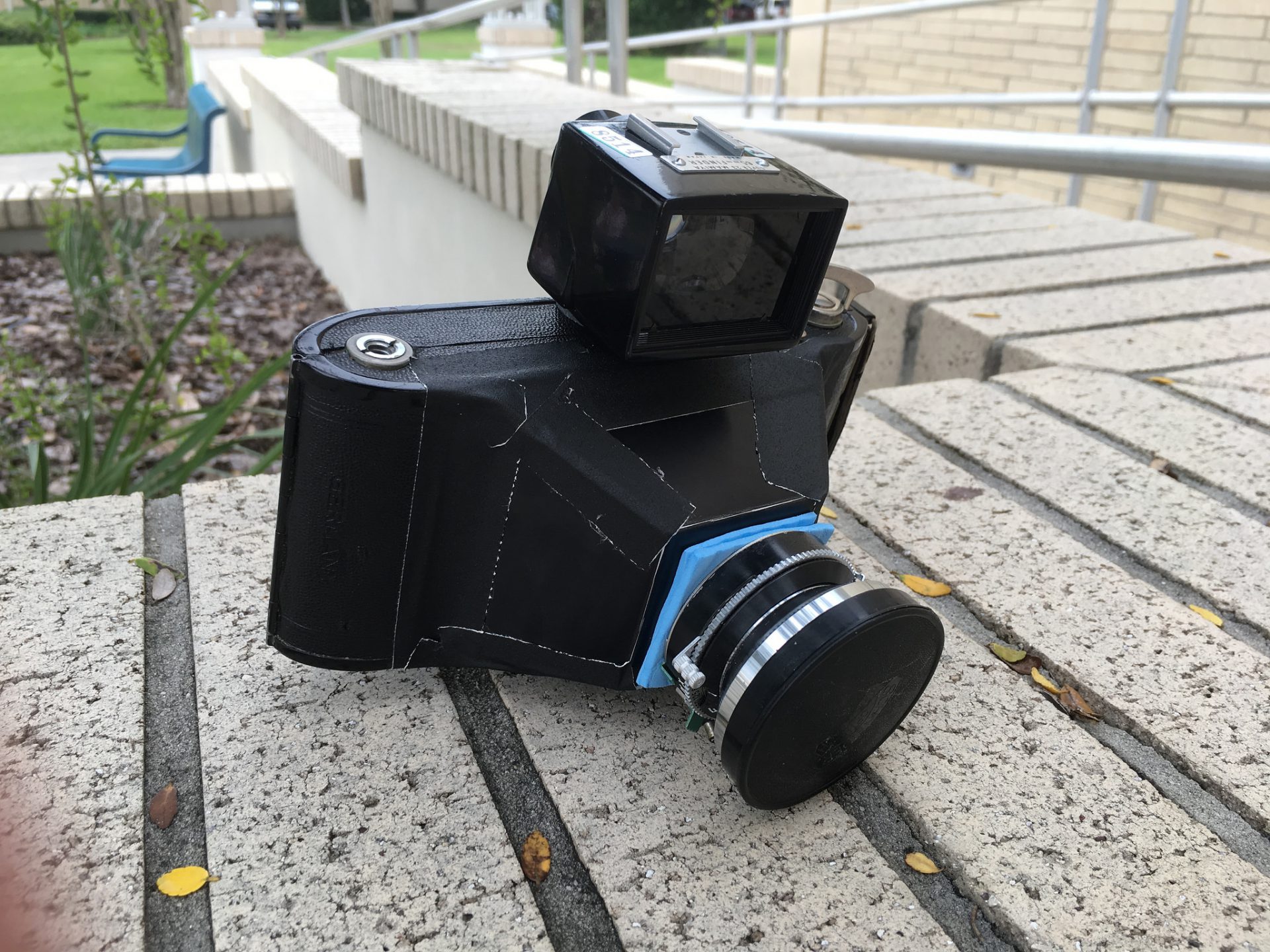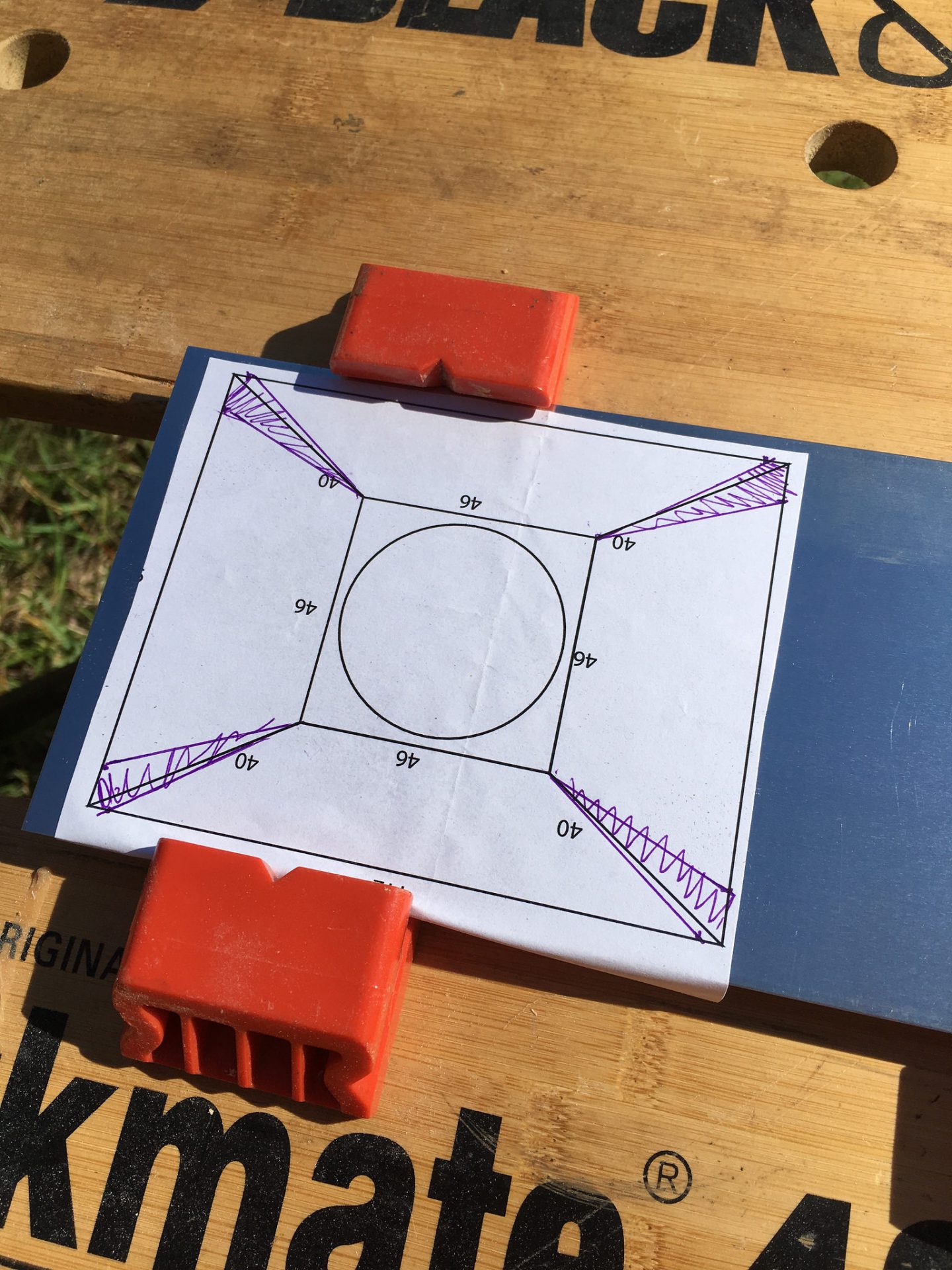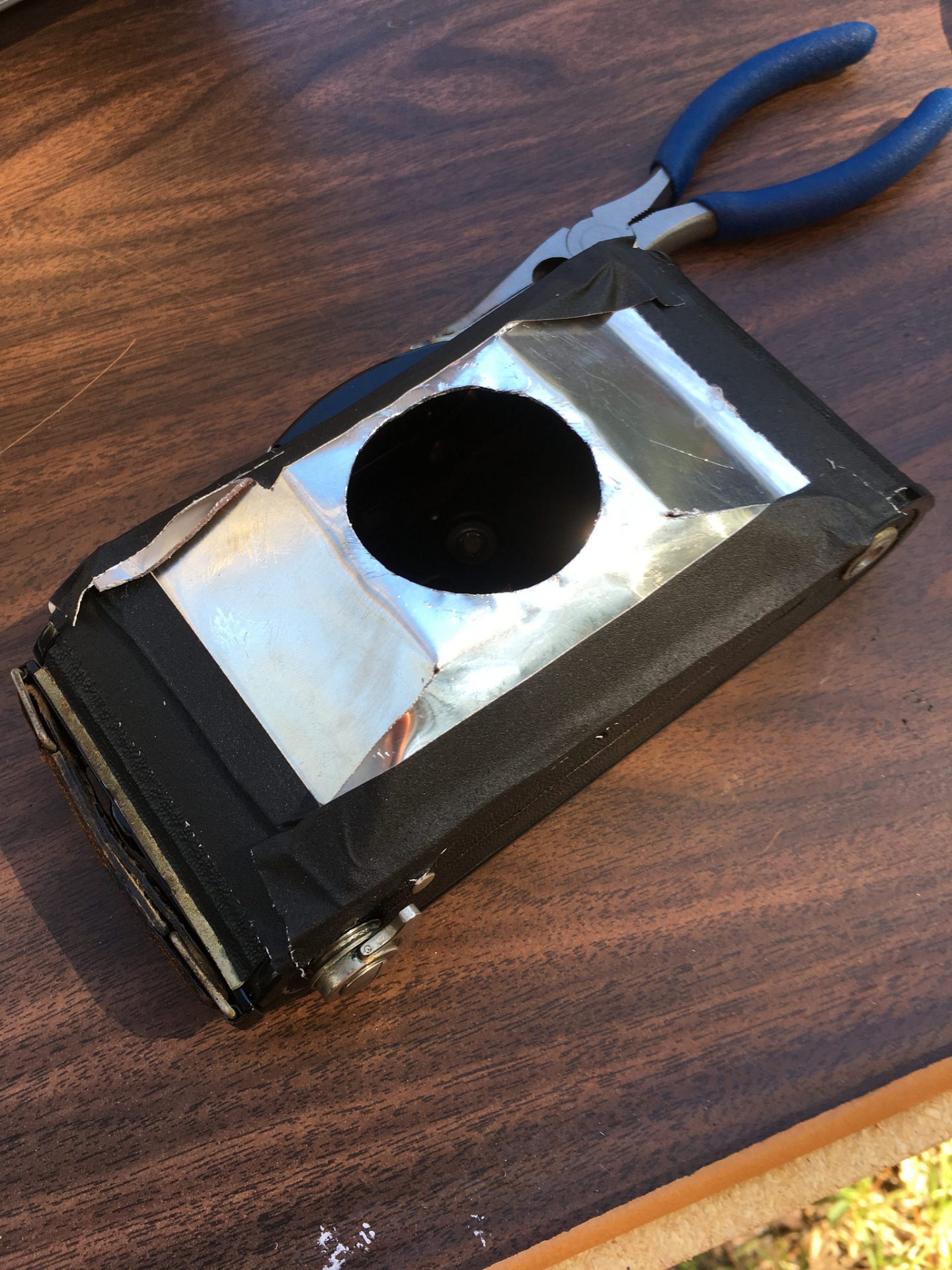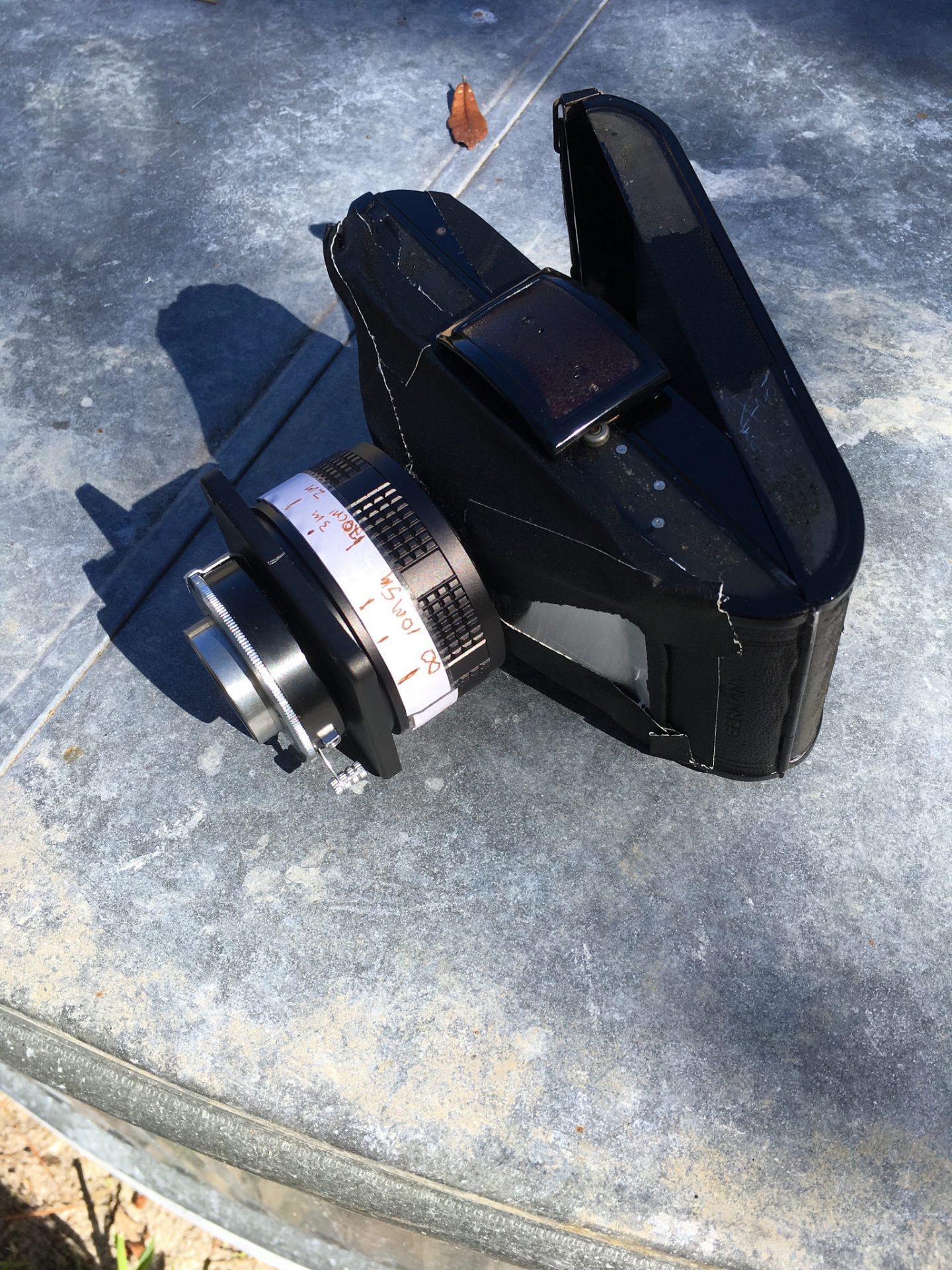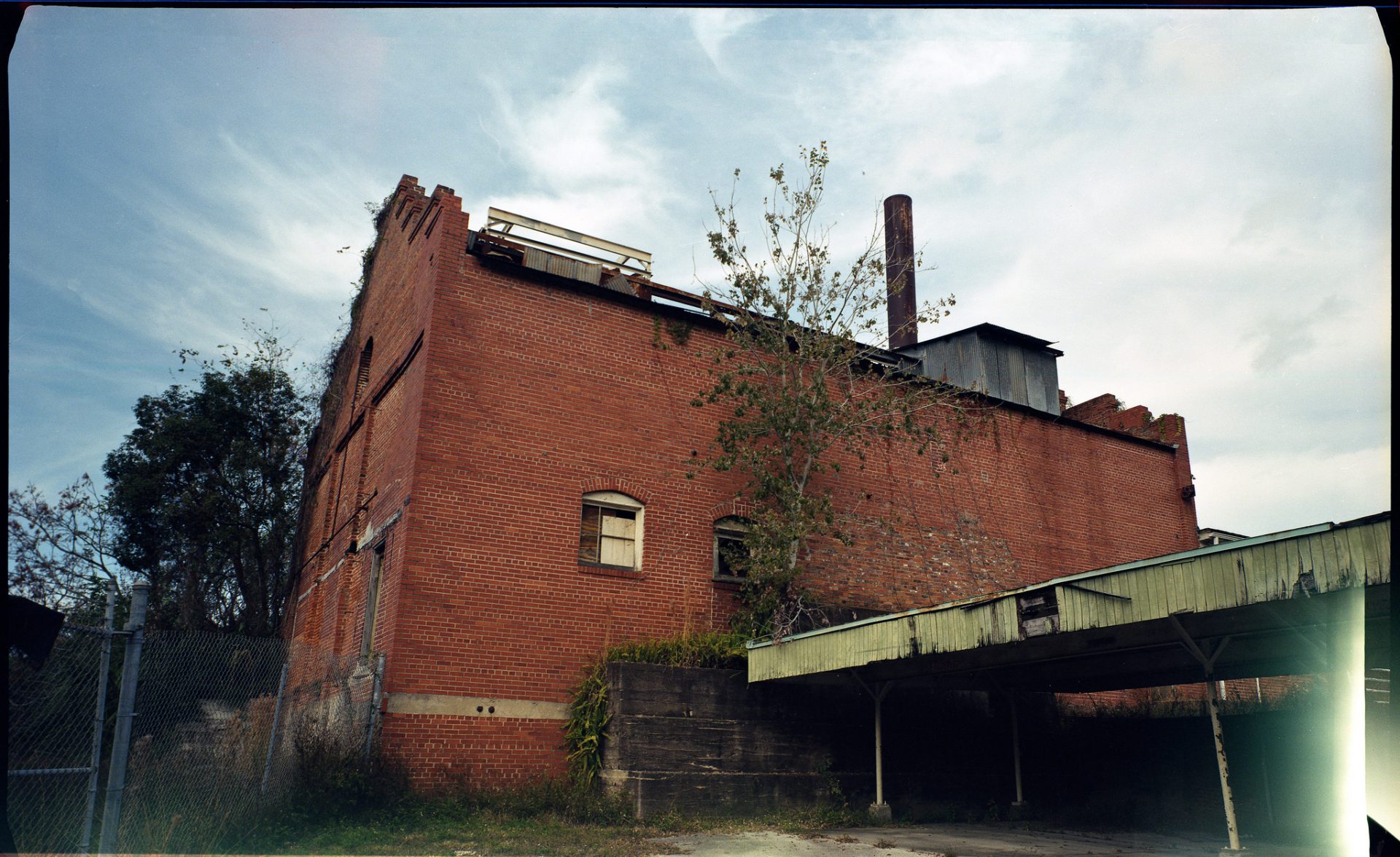Graham mentions a trip around St. Simons Island where he took a picture (https://www.flickr.com/photos/129971511@N04/36592696526/in/datetaken/) with a camera he hates that got 84,000 views on Flickr for some reason he cannot figure out (1:25) as he and Nick discuss cameras they don’t like. Neither of them like the Minolta Weathermatic Dual.
Nick talks about issues with parallax in viewfinders (13:45) and the solutions to address the issue in cameras. Graham grabs a couple of cameras off his shelf to verify what Nick says. They take a moment to revel in Voigtlander fandom (20:05) and then get back to business.
They move on to SLR through-the-lens viewfinders and their advantages and disadvantages (23:45) along with the advantages of the pentaprism on SLRs (29:30).
Some viewfinders have very little information and some have an overload of information and this balance can can affect the shooting experience (36:20).
They discus “viewfinder” cameras like the Trip 35, cameras with little or no information in the viewfinder (30:30).
Filter effects are discussed and how to use them without seeing the actual taking image (44:38).
They eventually make their way to large format cameras and viewfinder issues with view finding (53:25).
Finally, Nick and Graham start talking about how to make, adapt and scavenge your own viewfinders for homemade camera projects (1:02:54). They mention an article in 35MMC about salvaging a viewfinder from a broken camera (1:08:29) (https://www.35mmc.com/01/07/2018/35mm-accessory-viewfinder-budget-conscious-wonders-3d-printing/
With the subject of viewfinders completed, our fearless hosts moved on to poking the bear (Graeme of Sunny 16 Podcast) and his call for the smashing of all Scameras on sight. Nick and Graham (note how OUR Graham spells his name correctly) have responded to this heinous call with a call to action of their own: Modify these cameras into worthwhile photographic tools (1:26:20).
This episode’s book is The Ansel Adams Guide: Basic Techniques of Photography – Book 1 (https://www.amazon.com/Ansel-Adams-Guide-Techniques-Photography/dp/0821225758/ref=sr_1_1?ie=UTF8&qid=1533591609&sr=8-1&keywords=the+ansel+adams+guide) (2:03:55).
Graham read one email talked about two Kickstarter campaigns for 4X5 cameras, the Standard (https://www.kickstarter.com/projects/144867732/the-standard-4×5-a-3d-printed-4×5-view-camera) that was ending in just an hour and a half and the Camradactyl (https://www.kickstarter.com/projects/416154634/cameradactyl-4×5-field-camera) that still had 16 days to go as of the recording. Both efforts had reached their goals.


